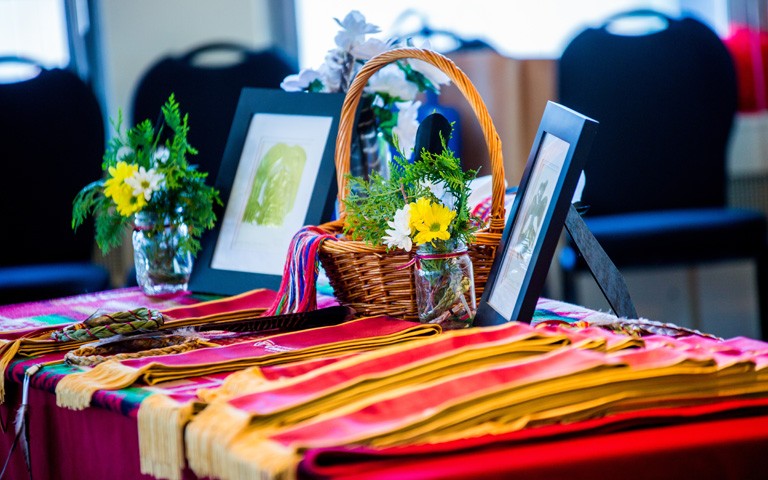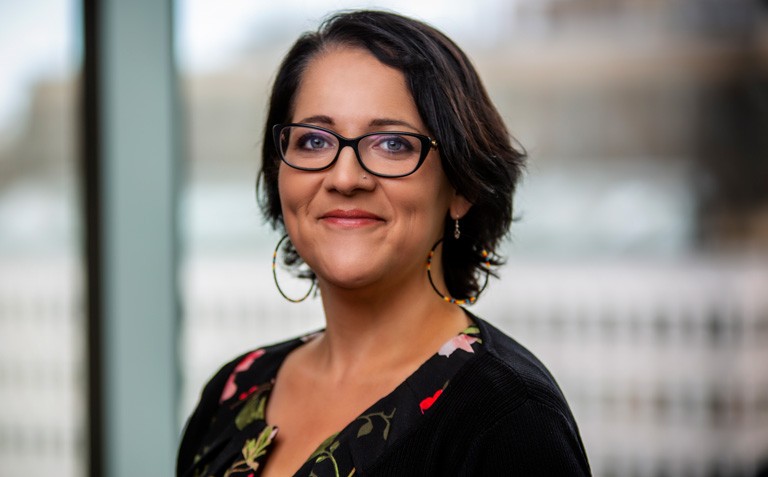Concordia launches a new tool to promote Indigenous self-identification
 “The new self-identification feature allows students to be more specific about which nation they’re coming from.”
“The new self-identification feature allows students to be more specific about which nation they’re coming from.”
Concordia students who are members of an Indigenous community, band or nation can now self-identify as First Nations, Métis, Inuit or international Indigenous at any point during their academic journey.
"Self-identifying is important. It will allow us to get a better idea of exactly how many Indigenous students are attending Concordia," says Veronica Lefebvre, Indigenous student recruitment officer.
"That way we can push the university to provide the resources needed to deliver adequate services for them.”
How to self-identify
Concordia students can self-identify as Indigenous by logging in to MyConcordia and going to “My Student Centre.” Under the “Personal Information” section, they’ll find the link for “Indigenous Self-Identification.”
Alumni are also encouraged to self-identify, and there are hopes in the future to create networking opportunities for students with Indigenous graduates of the university.
“The Aboriginal Student Resource Centre’s 30-year anniversary is coming up in 2022, and the ability to reach out to alumni for events and celebrations will be much easier through this tool,” says Orenda Konwawennontion Boucher-Curotte, coordinator for Concordia’s Aboriginal Student Resource Centre (ASRC).
The information students provide will only be available to select staff in the ASRC and the Office of the Registrar. All information will be kept confidential and the university won’t be asking for proof of ancestry. Students who have any concerns about who may see their information are encouraged to reach out directly to the staff at the ASRC.
 Orenda Konwawennontion Boucher-Curotte
Orenda Konwawennontion Boucher-Curotte
The deeper significance of self-identifying
Providing a way for Indigenous students to self-identify means the ASRC and the university can stay in touch and share information about cultural activities as well as funding and networking opportunities.
“Students who may have been excluded from their communities due to institutional policies like the Indian Act find that coming to the ASRC has afforded them opportunities to reconnect with their cultures and their communities and make long-lasting friendships,” says Boucher-Curotte.
She adds that, for many students, the ASRC is a “home away from home.” The self-identification tool makes it easier for ASRC staff to reach out to students who may not otherwise know about the services they provide. Having access to an in-house Elder, as well as mentors and support resources, can make a difference in student success.
Self-identifying allows the ASRC to keep record of students who qualify for scholarships and bursaries reserved for Indigenous students — and more importantly — share the award information with eligible students.
According to Boucher-Curotte, self-identifying can also hold a deeper significance for many Indigenous students.
“The previous option on the MyConcordia portal didn’t really allow students to identify themselves by the name that they feel they should be identified as. The new self-identification feature allows them to be more specific about which nation they’re coming from.”
For example, Boucher-Curotte identifies as Kanien’kehá:ka (People of the Flint) and Haudenosaunee (People of the Longhouse). However, to most non-Indigenous peoples she would only be known as Mohawk. Being able to self-identify with her community and her language allows her to fully express her connection to the land.
By self-identifying, students also have the option of indicating whether they want to be contacted by the ASRC or not. “Self-identifying doesn’t mean you’ll be on our mailing list if you don’t want to be,” Boucher-Curotte notes.
She adds that staying in touch with the ASRC does come with many perks. For one, it means being connected to a welcoming on-campus community with access to resources including meeting with a mentor, access to a computer lab and free printing services.
Connect with Concordia’s Aboriginal Student Resource Centre.


